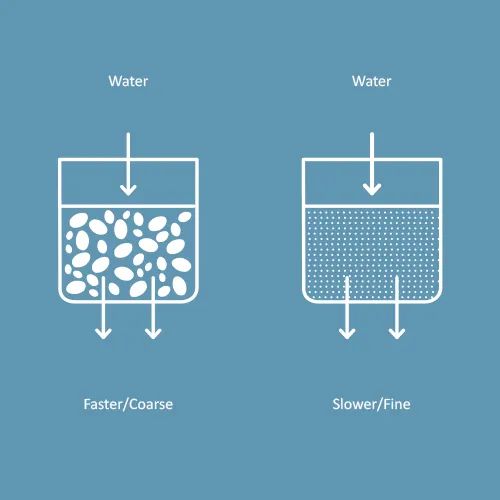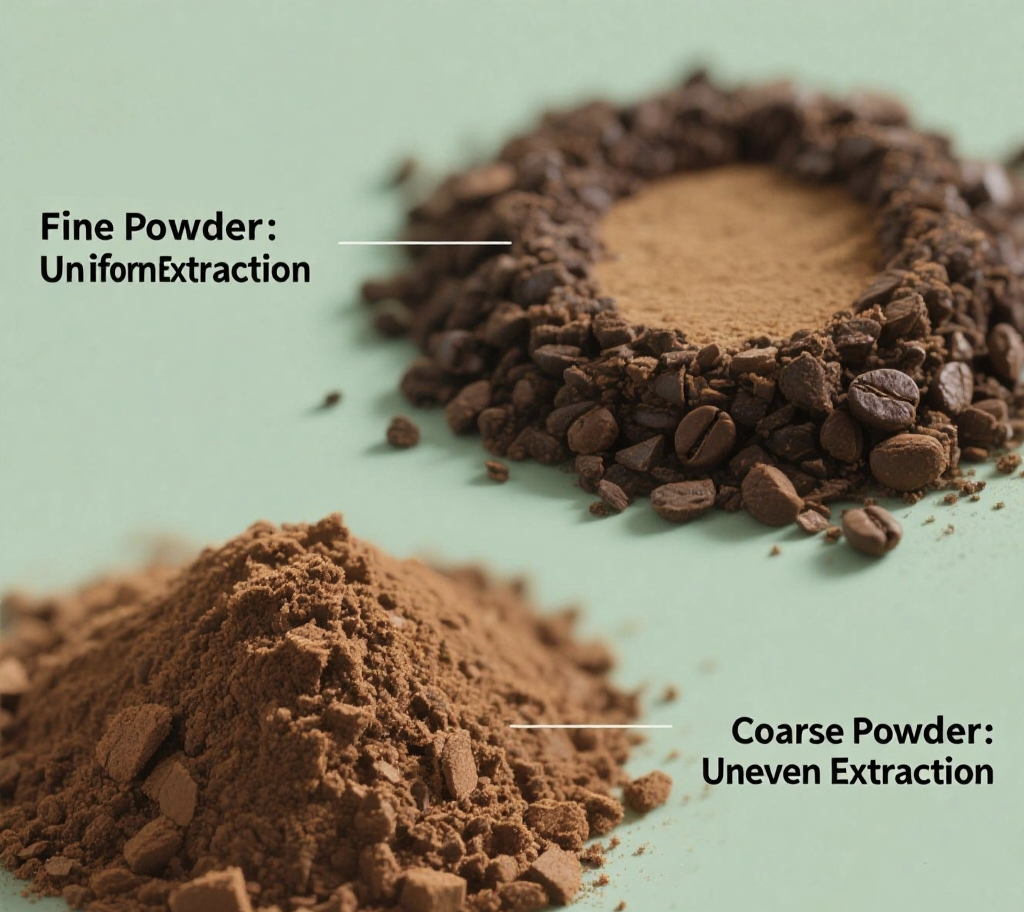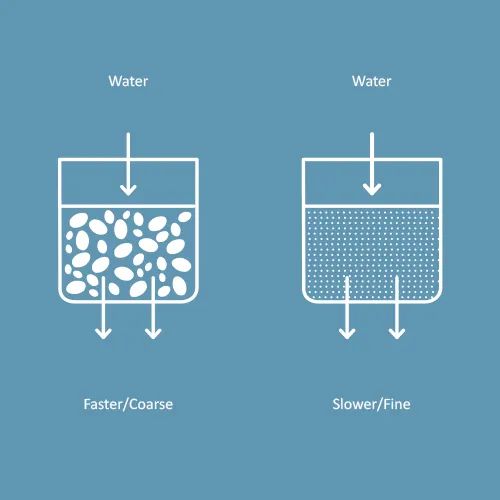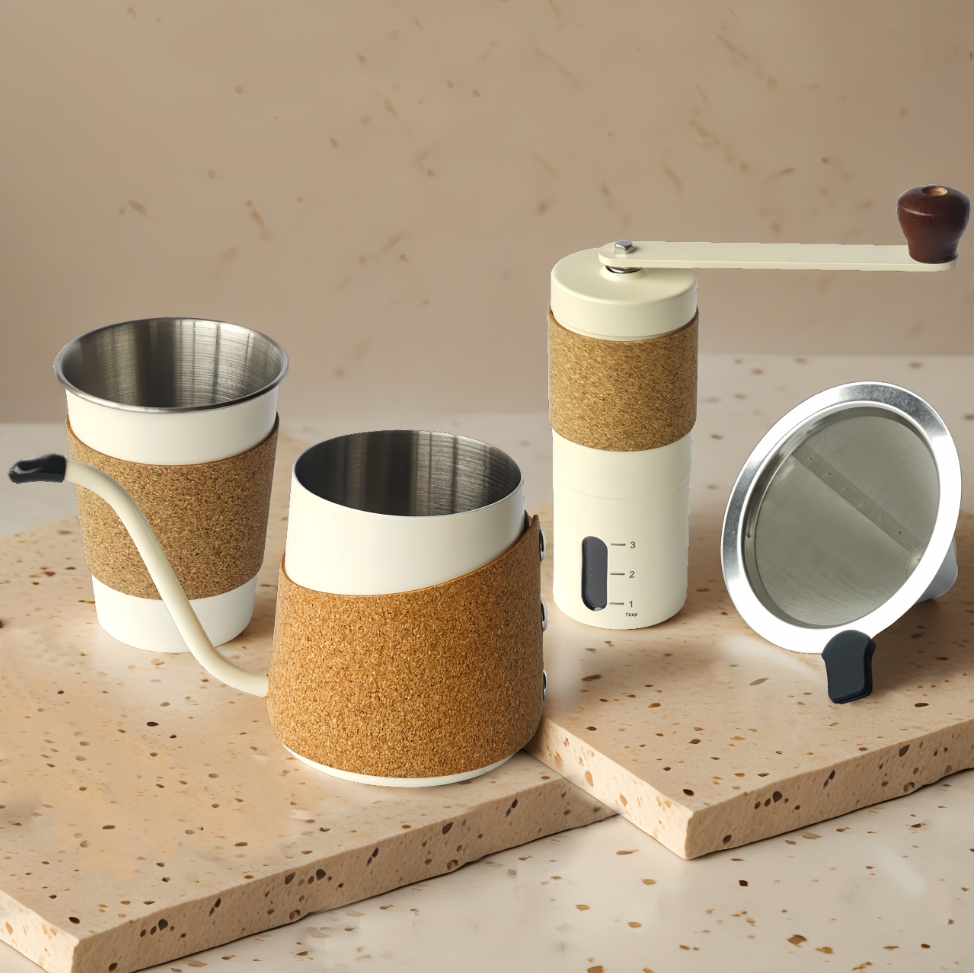It's a common misconception that the coarser the coffee grounds, the better the taste when brewing at higher temperatures, with faster swirling and larger water flow.
However, the relationship between coffee bean particle size and coffee flavor is a fundamental rule in coffee brewing that every hand brewer must understand. The coarseness or fineness of coffee grounds directly affects the extraction time, extraction rate, and concentration.
Rule One: The finer the coffee beans are ground, the denser the powder layer becomes, and the overall surface area of the coffee powder increases. This leads to a longer extraction time, a higher extraction rate, and a stronger, more intense coffee flavor. However, it also makes over-extraction more likely.
Rule Two: The coarser the coffee beans are ground, the larger the gaps in the powder layer, and the less surface area of the coffee comes into contact with hot water. This results in reduced extraction resistance, shorter extraction time, and a lower extraction rate. The coffee particles don't have enough time to release soluble substances, which can lead to under-extraction and a weak, bland coffee flavor.
Effective Extraction Quality of Coffee.Coffee guru Scott Rao explains in his book "Coffee Brewing Science" that due to the irregular structure of coffee beans, the force distribution during grinding is not uniform, and coffee powder particles are not ground into the same size or shape.

In a typical coffee powder particle size distribution, the majority of coffee powder particles are concentrated within a small range of the grinder's "setting scale," which is the ideal grind size. Additionally, there are a small number of large particles called "coarse powder" and a large number of small particles called "fine powder," which make up a very small proportion of the total weight. The optimal extraction rate for coffee is 18% to 22%. This means that not all coffee powder participates in the extraction process.
The portion that participates in the extraction can be called the "effective extraction quality."The finer the coffee powder, the more effective extraction quality there is. In the case of relatively fine particles, the extraction difference between the surface and the center of the particles is reduced, and the surface of the coffee particles is less likely to be over-extracted. Therefore, the finer the coffee powder, the higher the extraction efficiency required, which means other brewing factors such as higher water temperature, ratio, and flow rate need to be adjusted.
If you feel a bitter and astringent taste in a fine-grind coffee, it could be due to over-extraction. If it's only bitter without astringency and has a good flavor, it might be due to high coffee concentration, and adding more water can solve the problem. If there is a strong astringent taste and many off-flavors, it is likely due to uneven extraction, which often occurs in the coffee powder at the edge of the cup. You can try shaking the filter during the later stage to solve this.
The coarser the coffee powder, the less effective extraction quality there is. In the case of relatively coarse particles, the extraction difference between the surface and the center of the particles increases, and the surface of the coffee particles is more likely to be over-extracted. Therefore, the coarser the coffee powder, the lower the extraction efficiency required, such as lower water temperature, ratio, and flow rate. If a coarse-grind coffee is still very weak and has poor flavor despite increasing the water temperature and proportion, it is ultimately due to too little effective extraction quality and over-extraction of the surface. If you don't want to change the grind size, you can try reducing the proportion.

When coffee particles are fine, the hot water can reach the deepest part of the extraction in a short time, resulting in higher extraction uniformity. The over-extracted surface, fully extracted part, and slightly extracted part are more consistent and uniform, and there are very few parts that cannot be extracted, making it easier to form a concentrated flavor.
When the coffee grounds are coarse, the hot water takes longer to reach the deepest part of the extraction, and in some cases, the center may not be fully extracted. The over-extracted surface takes up the majority, while the fully extracted surface takes up a small portion, with some partially extracted areas and an unextracted center. This extraction method makes the coffee more layered.
The preference for "fine grinding, high water temperature, and large water flow" in the European and American coffee industry is not without reason.


 There are three types of espresso. What are the differences among them?
There are three types of espresso. What are the differences among them?
 Extraction Depth Analysis: How Different Grind Sizes Affect Coffee Flavor
Extraction Depth Analysis: How Different Grind Sizes Affect Coffee Flavor
 New Release: High-Design Magnetic Container Manual Coffee Grinder
New Release: High-Design Magnetic Container Manual Coffee Grinder
 Beginner-friendly manual stainless steel pour-over set: Lock in the true aroma of coffee with simple operation.
Beginner-friendly manual stainless steel pour-over set: Lock in the true aroma of coffee with simple operation.
